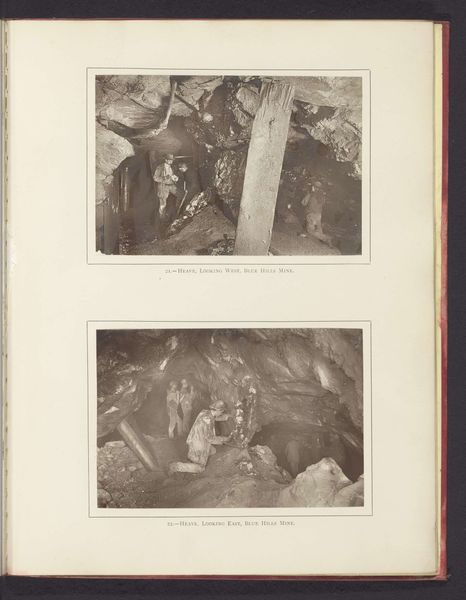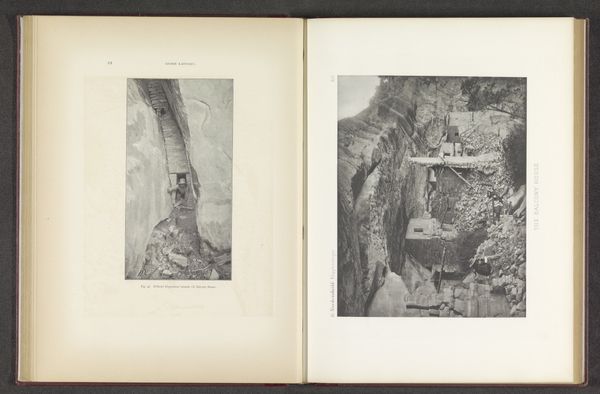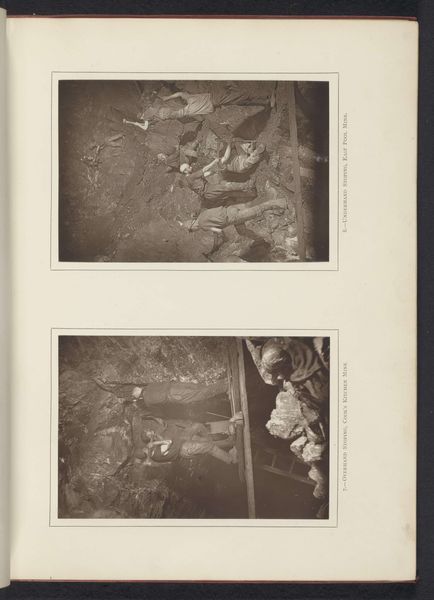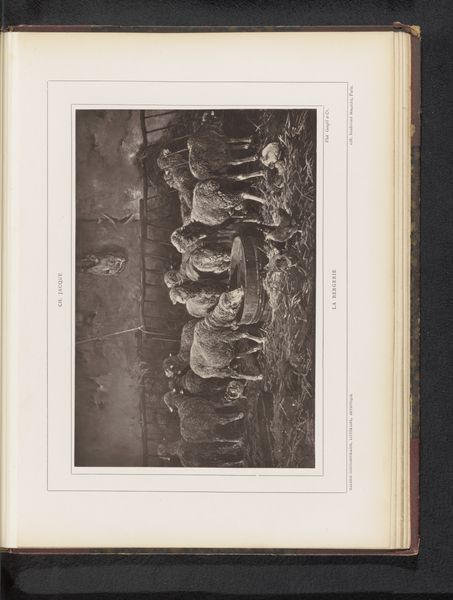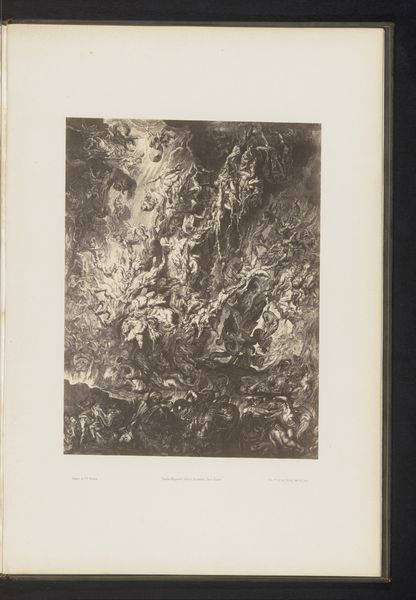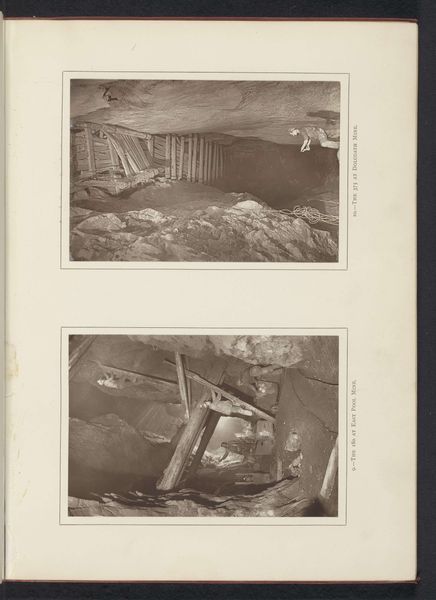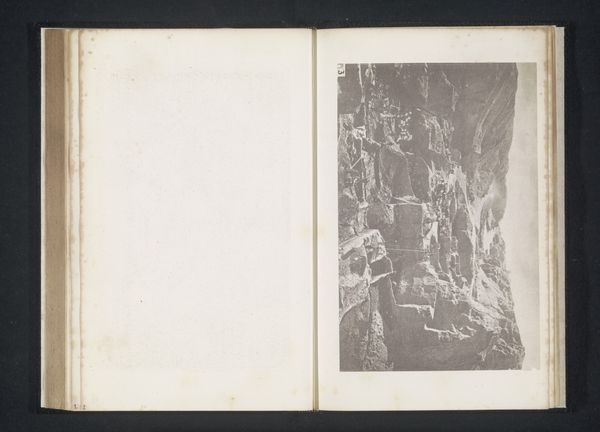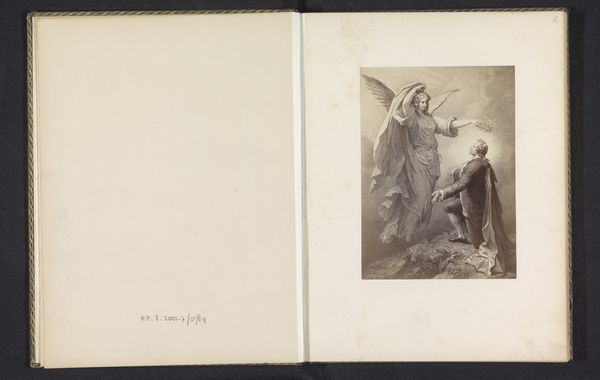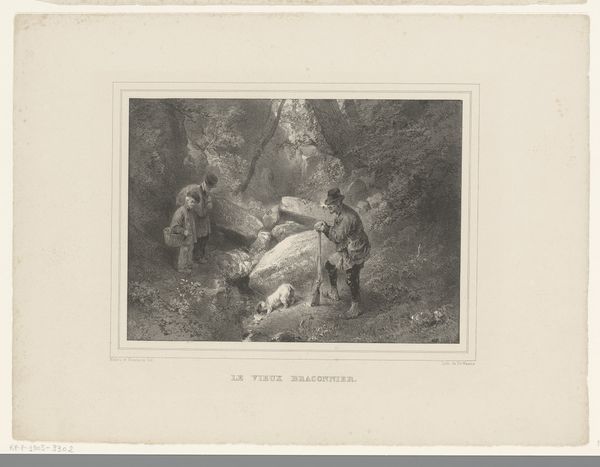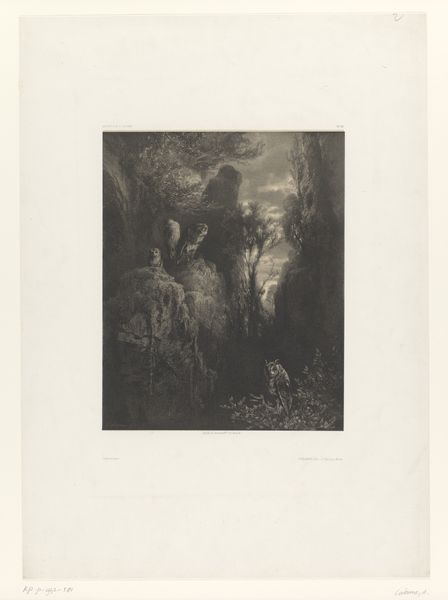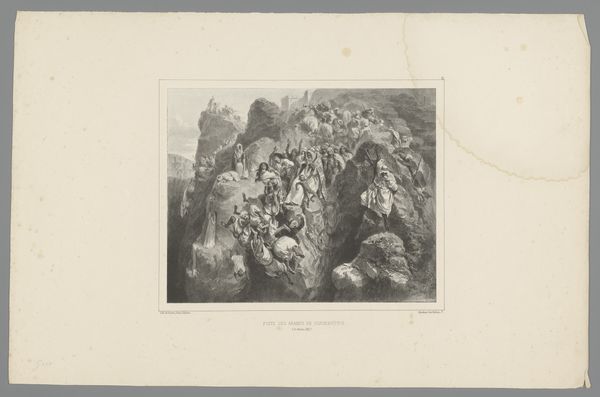
photography, gelatin-silver-print
#
portrait
#
landscape
#
photography
#
gelatin-silver-print
#
genre-painting
#
realism
Dimensions: height 304 mm, width 243 mm
Copyright: Rijks Museum: Open Domain
Editor: Here we have two gelatin-silver prints by John Charles Burrow, dating to around 1893, titled "Mijnwerkers aan het werk in een mijn te Cornwall," or "Miners at Work in a Mine in Cornwall." I’m struck by the harsh conditions suggested by the low ceilings and dim light. What do you see in this piece, focusing perhaps on the production of it, beyond its face value? Curator: Well, first we must consider photography itself as a technology. This print isn't just documenting labor, it's participating in a specific form of industrial visualization. Burrow, documenting Cornish mines, uses the gelatin-silver process, a relatively new, mass-reproducible technique. Consider the access this grants: how did photography shift perception around mining at the end of the 19th century, moving an intensely laborious undertaking into something publicly consumable? Editor: That makes a lot of sense. The wide availability of the images transforms the experience of mining and miners to a broader population. Curator: Exactly. Think about the materiality of the mines themselves, the rock and minerals extracted versus the paper on which this image is rendered. Is the photograph's production analogous to what’s happening in the mines? Editor: I hadn't considered that. There's an extraction and transformation involved in both, creating value from raw material. So it’s almost a metaphor of that industrial era! Curator: Precisely. Both mining and photography are reliant on complex material processes and exploitation of resources, isn’t it? I think we tend to forget about these contexts when appreciating works of art. Editor: This is really insightful. I'll definitely view photographs, especially from this period, with an eye toward their material origins. Thank you!
Comments
No comments
Be the first to comment and join the conversation on the ultimate creative platform.
